Photographing a bottle of wine is all about a shot that accentuates the product and makes it look enticing. The setup doesn’t have to be complicated. You can very well use bits and pieces to compose each aspect of the shot. As long as you have a set of workable frames you can bring them into post and produce the final perfect image. Dustin Dolby shares his minimal approach to photographing wine using speedlights:
There are a lot of limitations in this shoot. The working space is small and there are only two lights and both of them are speedlights. Even the lens Dolby used was just a kit lens. Yet, as the final image shows, the results are near perfect.
Dolby used a piece of black Plexiglass to create beautiful surface reflections. Using Plexiglass saves you time in post.
The first piece of editing is taking care of the distracting elements on both sides of the frame. The minimalist background is adjusted easily in post by making a selection and then dragging it out to the sides.
The camera is set up to look up at the bottle of wine and the glass. The oval line at the top of the glass gives more depth to the image because of this. This comparison explains better:
With the higher angle (right) the glass looks flatter and the image isn’t as inviting as the first (left) one.
Dolby set the key light up on camera left and fired through a diffuser. That left a bit of dramatic light fall off from left to right of the bottle. To fill in some of the shadows, he used a reflector on camera right. This helped to lift some of the shadows.
In order to bring up the background, he set up a second speedlight, aiming at the background at a 45 degree angle and set at 1/64 power. The idea was to create a subtle change in the exposure of the background. Here is a before and after comparison:
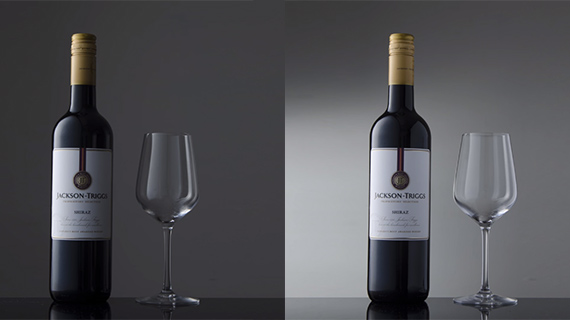
before (left) vs. after (right)
The background gradient is more distinct and the wine label looks better. There is also a distinct gradient play on the wine bottle as you move from left to right.
The final adjustment was to get some more light at the top of the bottle near the cap:
Ideally, you should also get a shot of just the glass.
This is to ensure that a beautiful gradient of the glass is also captured for use in the final image.
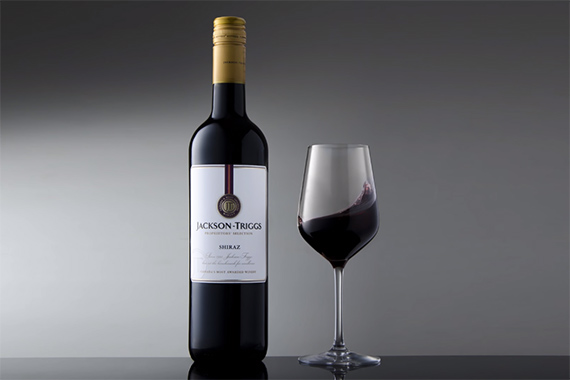
Final Image
The swirling wine in the glass required one more frame, and it was blended into the final image during post.
Like This Article?
Don't Miss The Next One!
Join over 100,000 photographers of all experience levels who receive our free photography tips and articles to stay current:
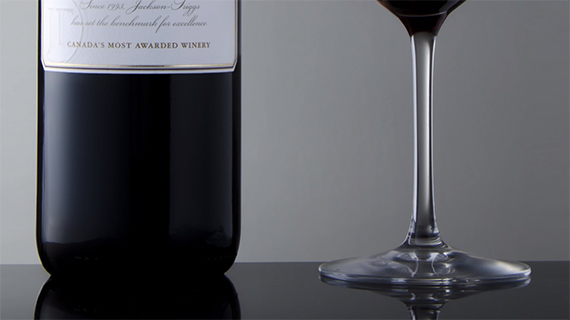
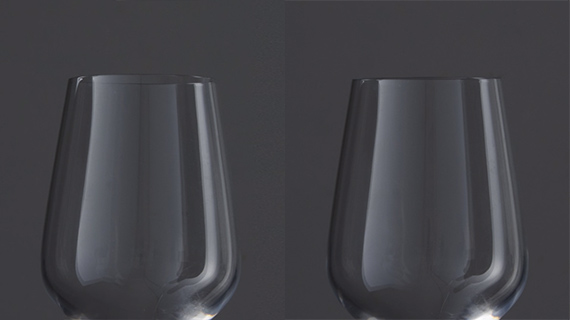
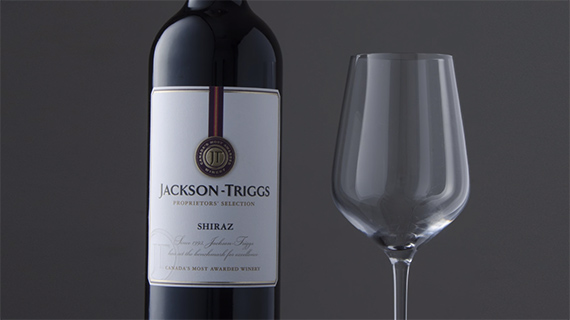
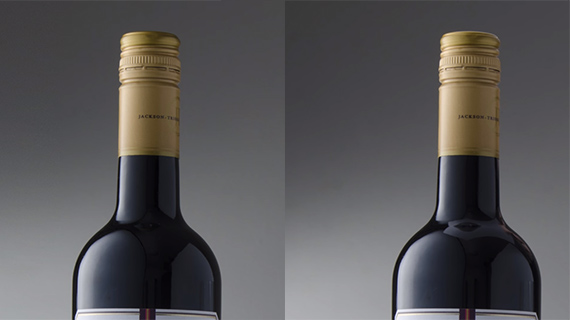







Its really amazing article how to photograph a wine bottle. Thanks for sharing it with us.
Great tutorial on how you create a high end shot with just a minimalistic setup. Love this kind of video’s!
Nice video but I did not see where the initial speed light was placed. He talked extensively about the second one but I really did not know the placement of the first one nor saw the placement. As a result, the video for me was useless. Was it just me or did I miss it?